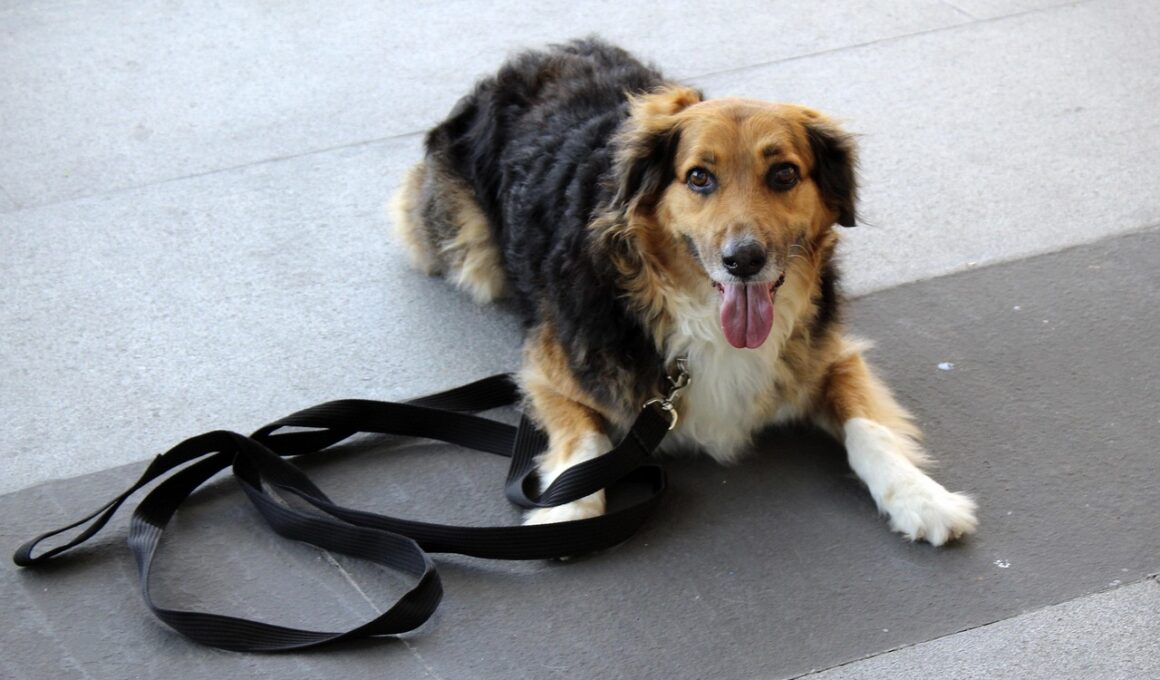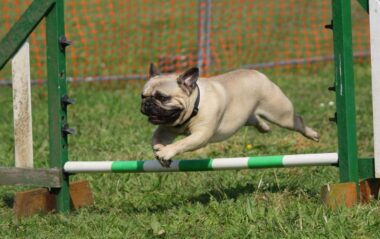How to Address Stubbornness in Dogs: Effective Training Tips
Stubbornness in dogs can be quite a challenge for owners, leading to frustration during training sessions. This common behavior occurs when a dog exhibits resistance to commands or tasks, reflecting its independent nature. Understanding the reasons behind this stubbornness is crucial for developing effective training techniques. Often, stubborn dogs may be reacting to their environment, previous experiences, or lack of motivation. To address stubbornness, it’s essential to identify the specific triggers that lead to such behavior. By understanding why your dog is refusing to listen, you can tailor your training approach effectively. Building a strong bond based on trust and positive reinforcement plays a significant role, as dogs tend to respond better when they feel secure and accepted. Consistency is key; training sessions should be regular and predictable. Rewarding good behavior with treats and affection encourages dogs to obey commands. Remember, patience is vital in this process, so remain calm and persistent. Avoid using punishment, as it can lead to fear and further resistance. Instead, strive to create a supportive atmosphere that promotes learning and cooperation between you and your dog.
In addition to understanding stubbornness, implementing structured training sessions can significantly improve your dog’s responsiveness. Establish a routine that includes designated training times each day to enhance their learning. During these sessions, start with simple commands that your dog already knows to build confidence. Gradually introduce new commands, ensuring to keep the atmosphere positive. Incorporating short bursts of play can also refresh your dog’s interest and prevent boredom. Varying training locations can stimulate your dog’s mind, making them more adaptable to distractions they may encounter in different environments. Enrolling in obedience classes may also support you and your dog. These classes offer professional guidance, helping both of you learn effective training techniques. In addition, social interactions with other dogs can encourage your dog to observe and mimic good behavioral practices. As you progress, regularly assess how your dog responds to your training methods. Keeping a journal can be beneficial for tracking improvements and identifying any ongoing stubbornness. Remember that training is a lifelong commitment, and persistence will ultimately yield results. Celebrate small victories to maintain motivation for both you and your dog.
Understanding Your Dog’s Perspective
To effectively address stubbornness, one must consider things from the dog’s perspective. Often, dogs are not inherently disobedient; they may simply perceive commands differently. This view can stem from their natural instincts, breed characteristics, or previous learning experiences. For example, some breeds are known for their independent nature and may choose to follow their instincts rather than obey commands. Identifying these breed-specific traits allows owners to tailor their training approach accordingly. Furthermore, if a dog lacks interest in a particular command or doesn’t see the value in obeying, it becomes essential to make the command more engaging. Using treats, praise, or playtime as rewards can create a positive association with following commands. Additionally, exploring alternative motivational strategies is vital, particularly for stubborn dogs. Instead of relying solely on traditional methods, consider introducing interactive toys or challenges that prompt them to learn. Keep in mind that patience matters; addressing stubbornness takes time and effort. Building a deeper understanding of your dog’s unique personality can lead to more successful training outcomes, fostering a stronger bond and improving overall behavior.
Another effective strategy for dealing with stubbornness in dogs is to reduce distractions during training sessions. A cluttered environment with various sounds and sights can divert your dog’s attention, making it tough for them to focus on commands. Start training in a quiet area where your dog feels comfortable. As they become more responsive, gradually introduce them to busier settings, rewarding them for maintaining focus. It’s also essential to pay attention to your body language during training. Dogs are highly perceptive of human cues, so ensure you are conveying confidence and clarity when giving commands. Use consistent verbal signals along with hand gestures to reinforce learning effectively. Training sessions should always end on a positive note to encourage enthusiasm for the next session. Timing your rewards is crucial too; it’s imperative to reward your dog immediately after they follow a command to reinforce the connection between the behavior and the reward. Frequent breaks during training can help keep your dog engaged and prevent them from becoming overwhelmed or frustrated. Finally, reinforcing the desired behavior outside of formal training will integrate obedience habits into their daily life.
Encouraging Obedience through Play
Incorporating play into training sessions serves as an excellent means of encouraging obedience from stubborn dogs. Games that involve fetching or tug-of-war can be integrated into training, making exercises enjoyable while promoting listening skills. For instance, use a favorite toy as a reward when teaching commands. After your dog successfully follows a command, you can engage them in a fun game, connecting obedience with enjoyment. The playful association can motivate your dog to obey out of excitement rather than reluctance. Additionally, engaging in scent games boosts mental stimulation, as dogs love using their natural instincts for tracking. Hide treats around the house or yard, encouraging your dog to locate them while following specific commands. Another option includes agility courses, which are both rewarding and challenging. Encourage movement and obedience by guiding your dog through obstacles using commands. This interactive form of training builds confidence while enhancing their learning experience. Play also provides an avenue for bonding, which is particularly crucial when facing training challenges. Ultimately, creating a positive atmosphere where training feels like an adventure fosters a more cooperative and eager learner over time.
Understanding the necessity of patience is crucial in addressing stubbornness in dogs. Each dog has a unique learning curve that may vary based on age, breed, or previous training experiences. Avoid comparing your dog’s progress with others, as this can lead to unnecessary frustration. Instead, celebrate your dog’s individual achievements, no matter how small, as these can significantly influence their confidence and receptiveness to training. Always remember that consistency in your training approach is vital; inconsistent commands or rewards can confuse dogs and lead to more stubborn behavior. Keeping the training sessions short yet effective prevents fatigue and boredom, as dogs often lose interest after prolonged sessions. Additionally, involving family members in the training process creates a cohesive atmosphere, ensuring that all interactions with the dog reinforce the same rules and expectations. Furthermore, it’s essential to educate household members about dog behavior signs and their cues for increased understanding. The goal is to create a unified approach toward training and obedience throughout the home. Over time, these strategies can lead to noticeable improvements in your dog’s responsiveness, ultimately reducing stubbornness.
Seeking Professional Help
If stubbornness persists despite your efforts, seeking professional help may be a worthwhile consideration. Certified dog trainers possess the knowledge and experience to address specific behavioral concerns effectively. They can assess your dog’s needs and recommend personalized training methods suitable for their temperament. Additionally, group classes may provide valuable support, allowing you to see various training techniques and interact with other dog owners facing similar challenges. During group classes, observing how other trainers handle obstinate dogs can provide insights into new methods to try. If your dog has severe behavioral issues, such as aggression or excessive fear, enlisting the services of a specialized behaviorist might be necessary. Professional training not only improves behavior but also enhances the connection between you and your dog. Furthermore, many trainers incorporate positive reinforcement techniques, ensuring that training remains motivational rather than punitive. Remember to do thorough research when choosing a trainer, as not all training techniques suit every dog. The goal is to find a reputable professional who aligns with your views on training. Ultimately, professional training can provide fresh perspectives and strategies to conquer stubbornness effectively.
In conclusion, addressing stubbornness within dogs necessitates understanding, patience, and consistent training. Each dog is unique, having its temperament and learning style that requires tailored approaches. Focus on establishing trust and engaging your dog’s instincts, incorporating fun activities into your training. Additionally, maintaining consistency in your commands and rewarding positive behavior contributes significantly to success in training. It’s essential to have realistic expectations; progress may take time, emphasizing patience as a core component of the relationship. Remember that your enthusiasm and commitment to the training process can inspire your dog to learn. Lastly, don’t hesitate to seek professional help if needed, as their guidance can significantly change your training trajectory. As you navigate this journey, celebrate every small success, reinforcing the bond between you and your dog. This will foster better communication, paving the way for improved behavior and obedience challenges. The end goal is a well-adjusted dog that not only listens but enjoys the companionship of its human. By implementing the strategies discussed, you’re well on your way to conquering your dog’s stubbornness and establishing a rewarding relationship built on mutual respect.





